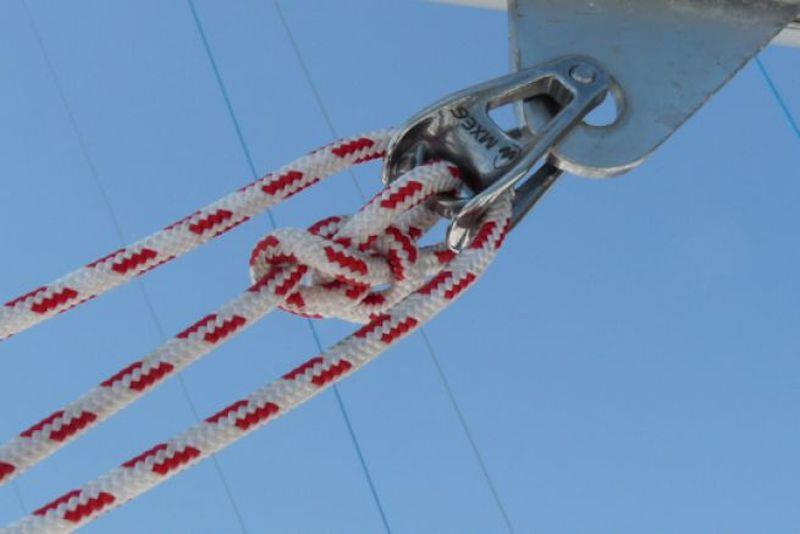
Wichard MXEvo 2:1/3:1 Blocks - Often imitated but tough to beat
by Aleix Escorsell 15 Oct 2021 09:00 BST

Wichard MXEvo Block © Wichard
Wichard's expertise comes from over 100 years of forging safety parts for the manufacturing industry, so when it came to designing boat fittings, strength and safety have always been at the top of their priority list.
This is evident in the Wichard MXEvo 2:1/3:1 Block range, but it is the simple, functional design that makes this piece of hardware stand out from the crowd.
Technically, the MXEvo is a friction sheave, with a smooth bearing surface around which a halyard or control line can pass through. The addition of an attachment point (becket), to act as a dead-end for the line, turns this from a 2:1 into a 3:1 purchase system, and makes it suitable for a large range of different applications.
Block or Shackle?
When this design first came onto the market it was commonly called the MX Shackle. An early application was to replace a standard/snap shackle underneath a continuous line furling drum to provide a lightweight, reliable 2:1 purchase system to control luff tension in a code zero or asymmetric sail. Therefore, it was a logical "extension" of a shackle.
However, sailors quickly started to realise that this simple, efficient design could also be used to replace the more bulky ball-bearing block on their furling swivel, for their 2:1 halyard. In their latest design iteration, Wichard have added a becket, which is a clear signal that the MXEvo has now officially evolved from a shackle to a block.
The Wichard MXEvo has two pin types:
The Captive pin version should be used when the MXEvo needs to be regularly removed. For example: 2:1 halyards on mainsails, spinnakers or gennaker or on the bottom of a furling drum.
A more permanent solution, the flush mounted Allen head pin is suitable for mast foot, or main outhaul, blocks and running backstays.
The MXLEvo
Building on the popularity and flexibility of the MXEvo, Wichard have created a soft attachment version called the MXLevo. They have blended a forged HR Stainless steel low friction bearing surface with an easy to open/close soft loop attachment system. This is ideal for mast foot blocks, 2:1 halyards, barber haulers and snatch block applications.
See how the MXEvo and MXLevo range compare with this attribute comparison guide
| Block | Rope size (mm) | Dimensions | Working load (kg) | Breaking Load (kg) | Weight |
|---|
| MXEvo 6 Allen | 8 | 53x26 | 720 | 1700 | 48 |
| MXLEvo 10 | 10 | 30x40 | 800 | 2000 | 40 |
| MXEvo 6 Captive pin | 8 | 53x26 | 1040 | 2300 | 53 |
| MXEvo 8 Allen | 10 | 62x36 | 1300 | 3500 | 100 |
| MXLEvo 12 | 12 | 40x54 | 1600 | 3800 | 90 |
| MXEvo 8 Captive | 10 | 62x36 | 1760 | 4100 | 109 |
| MXEvo 10 Allen | 14 | 77x44 | 1760 | 5000 | 204 |
| MXLEvo 16 | 16 | 47x60 | 2500 | 5000 | 140 |
| MXEVO 10 Captive | 14 | 77x44 | 2640 | 6000 | 222 |
In-line with the rapid acceptance of friction sheaves and low friction rings, replacing traditional bearing blocks, and with a working load range from 700-2600Kg, the Wichard MXevo / MXLevo blocks can be utilised in a host of different applications.
If you have any questions about the MXEvo and MXLevo blocks, then please do not hesitate to contact us at . Otherwise, get more detailed information on the range here: Shop Wichard MXEvo Blocks.